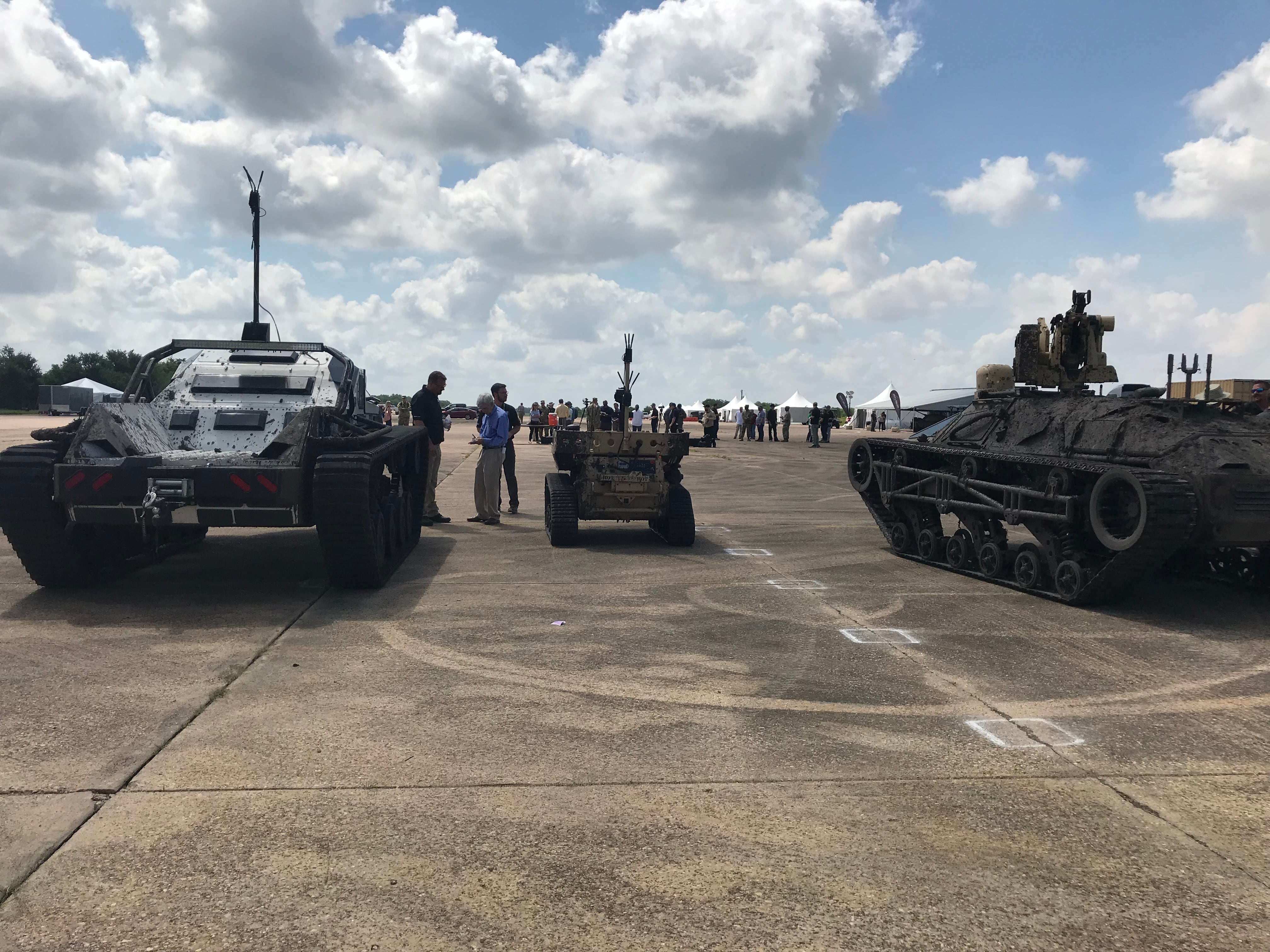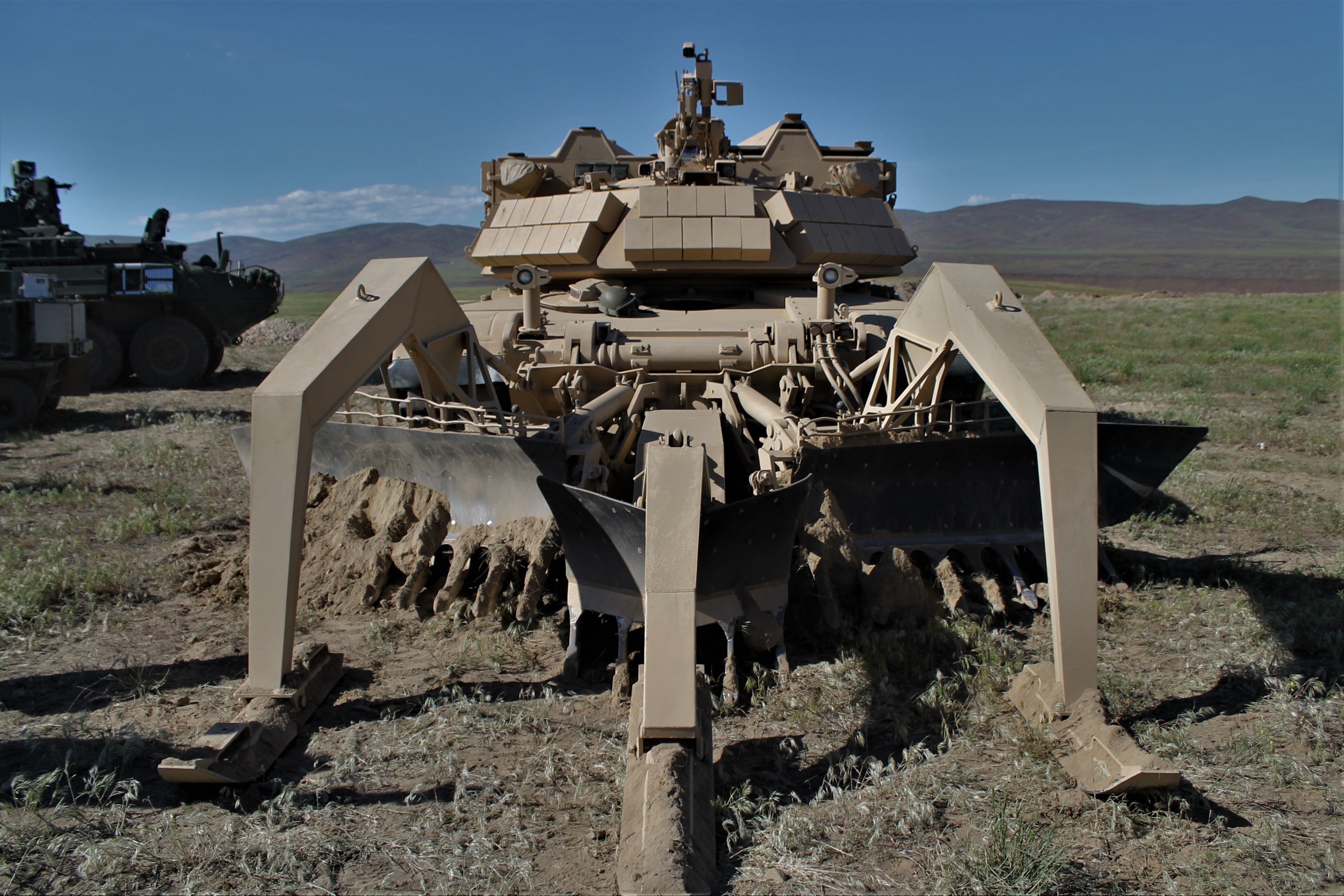WASHINGTON — The Army has invited four teams to compete to build prototypes for its future light Robotic Combat Vehicle, according to an announcement on the National Advanced Mobility Consortium’s website.
Out of a large pool of white paper submissions, a Textron and Howe & Howe team, a team of Qinetiq North America and Pratt & Miller, HDT Global and Oshkosh were each issued a request for prototype proposal.
The Army plans to procure a light, medium and heavy RCV as part of an effort to bring next-generation combat vehicle capability to the force by 2028.
The RCV-Light competition is being managed by the NAMC. While the Army is the decision maker, the consortium is tasked to execute the competition and is also running the RCV-Medium effort.
The Army is expected to award up to two contracts toward the end of the second quarter of this fiscal year to deliver four non-developmental RCV-L surrogate vehicles for government evaluation, testing and manned-unmanned teaming experimentation over the course of a year.
The RCV-M effort is not far behind the RCV-L as white paper submissions are currently being evaluated for down-select.
NAMC also executed a week-long RCV market research demonstration with the Army at Texas A&M’s RELLIS campus in May in order to better inform requirements. Out of the companies chosen to move forward, only Oshkosh was not present at the event.
RELATED

At the Association of the U.S. Army’s annual conference, Textron and Howe & Howe dramatically unveiled their RCV Ripsaw M5, which is based on Howe & Howe’s deep history of building unmanned ground vehicles, but adds technology like scalable armor and suspension and drive options to cope with the challenges expected in the future fight. FLIR Systems is also part of the team, contributing advanced sensors.
“Bringing together Howe & Howe, Textron Systems and FLIR Systems really represents a dream team,” Textron’s CEO Lisa Atherton, said in a statement released at the show. “We formed this team based on our shared focus to serve this customer with disruptive ideas and proven experience, and we are dedicated to meeting and exceeding their requirements through the RCV program.”
The team told Defense News before AUSA that it planned to submit a version of Ripsaw both for the light and medium variant of the Army’s RCV.
RELATED

HDT brought its Hunter WOLF to AUSA, and Qinetiq North America announced its partnership with Pratt & Miller at the show.
Qinetiq and Pratt & Miller plan to submit a variant of the Expeditionary Modular Autonomous Vehicle (EMAV) tailored for the Army’s needs. The offering combines Qinetiq’s modular open-architecture control systems with Pratt & Miller’s advanced mobility platform.
Jen Judson is an award-winning journalist covering land warfare for Defense News. She has also worked for Politico and Inside Defense. She holds a Master of Science degree in journalism from Boston University and a Bachelor of Arts degree from Kenyon College.








